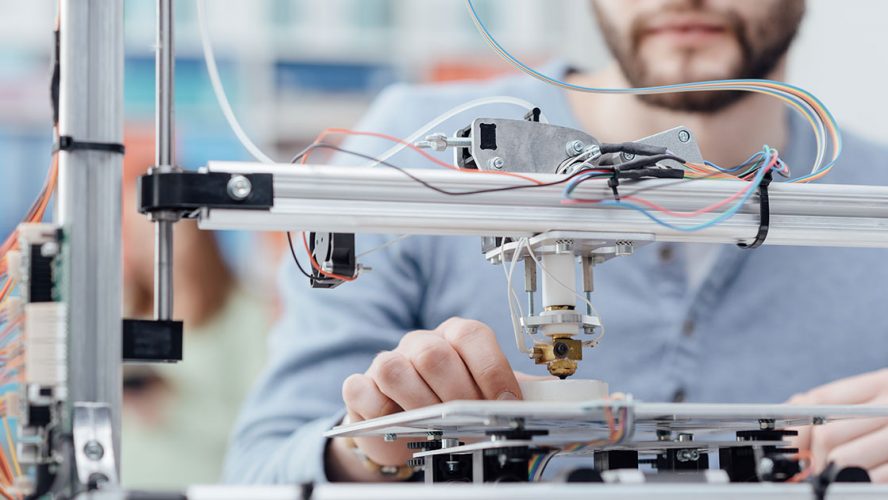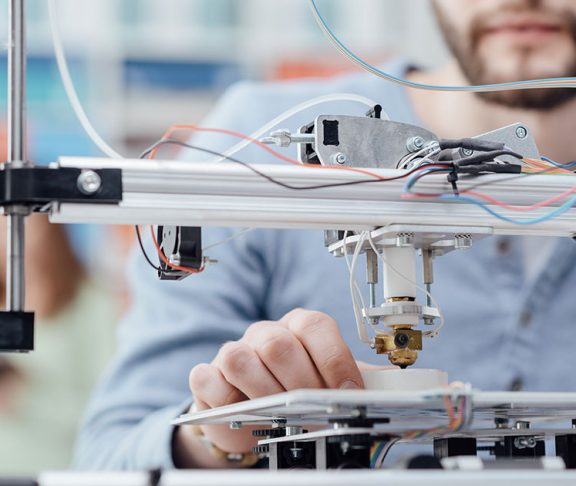Advanced manufacturing is not your grandparents’ technology — in fact, it’s the complete opposite. Smart machines, artificial intelligence, collaborative robotics, sensors built into fabrics and 3D printing are some examples of how advanced manufacturing is impacting how we work and live every day. Advanced manufacturing is delivering major innovations in important industries, including automotive, healthcare, energy and electronics resulting in breakthroughs in products and processes that were once considered science fiction.
Technology innovation
Our institute, AIM Photonics, based in Albany, NY and Rochester, NY, is part of Manufacturing USA and focuses on integrated photonics. We bring together partners in industry, government and education to accelerate developments in photonic technology and build training programs to create a skilled workforce.
A look at photonics
Camera systems often used as optical sensors in automation, referred to as LIDAR — an acronym for light detection and ranging — detect distance and range in various automated manufacturing processes, including machining, painting, welding, bolting, forming and 3D printing, to name just a few. The sensors are the ‘eyes and ears’ of these automated processes.
AIM Photonics will help revolutionize the future of these LIDAR cameras by shrinking the camera onto microchips, what we call integrated photonics. This will result in a more portable sensor that consumes less power, costs much less and will ultimately enable more sensors to be used in robotic automation for repeatable and more precise sensing.
Improving healthcare
Automation is utilized to improve traditional pharmaceutical products’ consistency and quality and improve process productivity and efficiency. Likewise, closed, automated systems with minimal human contact can be used to improve more advanced therapies that require highly standardized processes and have a high risk of contamination. For example, cell based therapeutic products will become commercially feasible because of automation.
Institutes like BioFabUSA and NIIMBL are collaborating with partners to harness the power of automation in ways that will improve treatment options for patients — whether through regenerative medicine or biopharmaceuticals.
Institutes outside of the healthcare industry are also innovating products with medical benefits. Purdue University, Integra Life Sciences, Indiana University, and Western Michigan University are partnering with NextFlex (the institute for flexible hybrid electronics) to develop a ‘smart bandage’ that can measure and manage oxygen levels in a wound to promote faster healing.
Increasing energy efficiency
PowerAmerica (the institute for wide bandgap semiconductors) is developing an electric vehicle fast charger that will eliminate the need for the large and expensive commercial electric vehicle chargers. This new charger will connect directly to the power company’s power lines, cutting costs, taking less space and improving power conversion to consumers.
Digitizing equipment
A project with the Digital Manufacturing and Design Innovation Institute, the University of Cincinnati, Raytheon, and others is creating an open source system using computer-vision-enabled cameras to read displays and produce data that will digitize legacy manufacturing equipment without disrupting production and for less than $1,000 per machine.
Impacts on Future products
The examples provide a glimpse into how advanced manufacting and automation are currently transforming industries and this trend will continue. Future self-driving cars are expected to improve driving efficiency and safety. LIDAR microchips will be incorporated into robotics, including manufacturing automation, enabling the robots to function more autonomously. This independence, combined with the potential for learning via artificial intelligence, will continue to transform our lives in the 21st century.
Hundreds of new developments like these are taking place at institutes across the country. We welcome your involvement.

